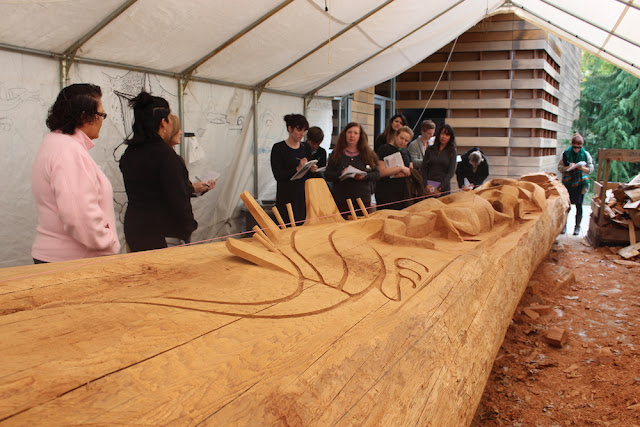 |
| Marie and Oliver Reid pose for a photo in their livingroom, Roddickton. Photo by Lisa Wilson. 2010 |
This community got its start with help from the Grenfell Mission when in 1906, when they built a sawmill operation in the region. Setting up this land-based industry was a direct attempt to address the uncertainties of the fishing industry. Previous to this development, the Main Brook area was known as Easter Brook and was mostly used by residents of Englee as hunting and fishing grounds. The name Roddickton was given to the new settlement in honor of a Grenfell Mission supporter named Thomas G. Roddick. The town was officially incorporated under the name of Roddickton in 1953.
The sawmill history of Roddickton is one riddled with contrasting times of growth and decline. The original sawmill only lasted until the early 1920s-a closure that saw most of the residents evacuated. This economic slump was temporary, however, as within four years, the Bowater Company moved into Roddickton to establish new mill operations. This industry motivated consistent growth for the community until the 1970s when Bowater too, was forced to shut down. Roddickton now operates as a service center for the greater region, helping to sustain the local population.
The Roddickton inventory is part of a founding collection for the Great Northern Peninsula Textiles Archive and Learning Center. This project, based in Conche, NL, is an on-going initiative to document and preserve the textile-based crafts that are being created on Newfoundland's Northern Peninsula. The items in this collection were gathered between May and July of 2010 and include photographs of textile craft objects such as the Newfoundland Quilt, patch work quilts, and knitted items. This inventory also includes audio clips of craftspeople discussing their particular textile-based skills and practices.
If you want to learn more about this collection click here and if you want to listen to an interview with Marie and Oliver Reid about knitting, quilting, taxidermy, and homemade guitars click here.
 |
| A painted Newfoundland quilt made by Marie Reid, Roddickton. Photo by Lisa Wilson. 2010 |
 |
| A guitar made by Oliver Reid, Roddickton. Photo by Lisa Wilson. 2010 |







